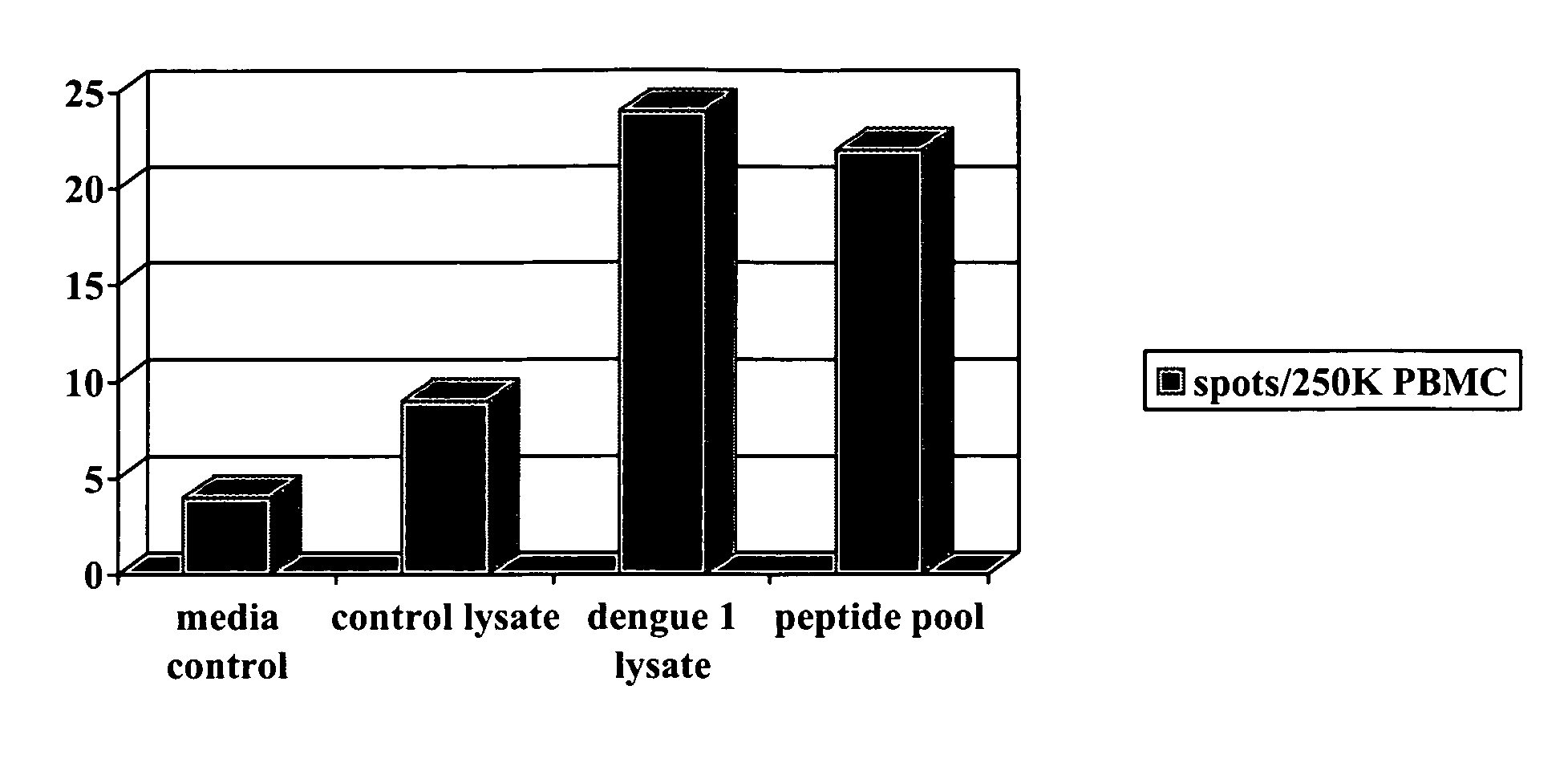Method for the evaluation of dengue virus therapeutic agents
a dengue virus and therapeutic agent technology, applied in the field of dengue virus therapeutic agent evaluation, can solve the problems of inability to effectively administer vaccines, hampered development of prophylactic methods and formulations, inconsistent results in studies using mice and non-human primates, etc., and achieve the effect of low cost in husbandry
- Summary
- Abstract
- Description
- Claims
- Application Information
AI Technical Summary
Benefits of technology
Problems solved by technology
Method used
Image
Examples
example 1
Induction of Viremia in Pigs
[0032]Optimal testing of anti-dengue virus activity by test compounds requires the ability to induce viremia in an animal model. Viremia in pigs was demonstrated by subcutaneous inoculation of dengue-1 (Western Pacific 74, WP74) virus to pigs. Two groups of pigs received either a low dose of 105 plaque-forming units of dengue-1 virus (group 1) or 107 plaque-forming units of dengue-1 virus (group 2) (Table 1). A third group received no virus (group 3). Serum from whole blood was obtained prior to virus inoculation and daily thereafter for 14 days in order to assess viremia by tissue culture isolation in Vero and C6 / 36 cells. Blood is easily obtained from pigs, including miniature pigs via the cranial vena cava and this site is amenable to daily needlesticks. As shown in Table 1, all animals administered virus developed at least one day of viremia detectable by tissue culture isolation. Virus was not detected from sera of control animals (not shown). Confir...
example 2
Evaluation of Induced Immune Cell Response Following Administration of Test DNA Vaccine
[0037]An example of the utility of the present invention is the evaluation of promising vaccines. DNA vaccines are particularly important as potential vaccine candidates for dengue virus. In this example, a plasmid was constructed encoding dengue-1 proteins. In these studies, the DNA vaccine was administered to pigs in multiple doses in different dose sizes. Control animals are also included that received saline diluent without plasmid. Different routes of immunization are also employed in different animals including intradermal (ID) and intramuscular (IM) injection. Although the current example utilized miniature pigs, other breeds of pigs, including larger breeds, are contemplated as also being suitable for use.
[0038]In this example, 30 animals were used, including four groups of six animals receiving vaccines. Groups 1 and 2 received 1 mg of DNA vaccine intramuscularly (IM) and intradermally (I...
PUM
 Login to View More
Login to View More Abstract
Description
Claims
Application Information
 Login to View More
Login to View More - R&D
- Intellectual Property
- Life Sciences
- Materials
- Tech Scout
- Unparalleled Data Quality
- Higher Quality Content
- 60% Fewer Hallucinations
Browse by: Latest US Patents, China's latest patents, Technical Efficacy Thesaurus, Application Domain, Technology Topic, Popular Technical Reports.
© 2025 PatSnap. All rights reserved.Legal|Privacy policy|Modern Slavery Act Transparency Statement|Sitemap|About US| Contact US: help@patsnap.com



